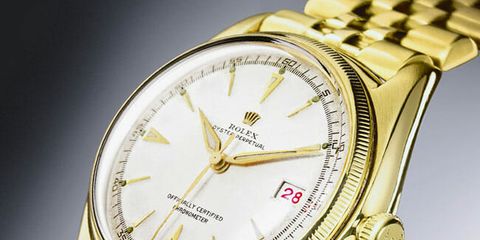Welcome to Watches You Should Know, a biweekly column highlighting important or little-known watches with interesting backstories and unexpected influence. This week: the Beta 21 quartz movement.
A disaster — this is how the watch industry tends to look back on the emergence of quartz technology in the 1970s-1980s. It caused particular havoc in Switzerland where the existing economy based around mechanical watches was decimated. While this was a crisis (the "Quartz Crisis") for Switzerland, it was a revolution (the "Quartz Revolution") for Japanese companies pumping out affordable watches, and for the public who could now easily afford them. Were the Swiss simply blindsided by a new technology out of Japan?
That's how this period in the history of watches is often characterized. Indeed, Japanese watchmaker Seiko did announce the first quartz watch to market, and many Swiss watchmakers failed to compete with the later mass production of ultra-affordable watches from the region. Swiss quartz watches of the time are often thought of as a reaction to Japanese products — but the Swiss-made Beta 21 quartz movement, developed concurrently with Seiko's, tells a different story.
The first quartz wristwatch to market, the 1969 Seiko Astron, is often cited as marking the beginning of the Quartz Crisis. Quartz timekeeping, however, goes back to the early 20th century at Bell Labs in the United States, while subsequent innovations like early electric watches from the likes of Hamilton and Bulova also furthered the tech that would eventually make quartz wristwatches possible. There were different approaches to the electronic future of timekeeping, but quartz was recognized as a promising solution by the early 1960s.
In 1962, no fewer than 20 Swiss watch companies banded together to form the Centre Electronique Horloger for the purpose of creating a quartz wristwatch movement. In 1967, the first prototypes, called Beta 1, were shown — and Seiko announced prototypes the same year. The race was neck-in-neck. Finally, Seiko crossed the finish line on December 25, 1969, to be followed by the Swiss only four short months later.
The first watch released featuring the Beta 21 was the Omega Electroquartz, which debuted ahead of models from other consortium brands including Rolex, Patek Philippe, IWC, Piaget, Longines, Rado and more. Like, say, the early electric watches from Hamilton, many of these had funky designs meant to emphasize the futuristic nature of quartz watches (and which probably influenced the general space-age watch design of the time). Interestingly, Seiko (which is now more associated with offbeat design) made its first quartz watch with a relatively traditional look.
Another reason for the bold looks and shapes of the Beta 21 watches was that the movements were rectangular and chunky — quartz would later further prove its worth by offering exceedingly thin movements, but this wasn't yet the case. It's interesting to see some of the early Beta 21 movements awkwardly (and delightfully) fit into watches' round case backs that look designed for another movement entirely — whereas Seiko's Astron movement was round.
In addition to unwieldy proportions, the Beta 21 movements also ran out of juice fairly quickly — but kinks in early technology are to be expected and could be worked out later: the primary purpose of developing and producing a quartz movement was all about accuracy. Here, the Swiss were able to achieve the same average deviation of +/-5 seconds per month as Seiko. Quartz was accurate right out of the gate, and it would later also prove to be robust, slim, light and downright cheap.
In watchmaking, being the "first" to do something new has great weight. However, the Swiss were ready for quartz almost as soon as it appeared: the Beta 21 and its competitive timing and accuracy show that there's a lot more behind Switzerland's supposed failure to keep up with the Japanese during those decades (but that, and how the Swiss finally came back, are complicated topics for another time). The Beta 21 watches are now obscure but collectible curiosities for the nerdiest of vintage watch lovers, but they're fascinating for their historical significance — and the nuance they lend to watch industry discourse.


















